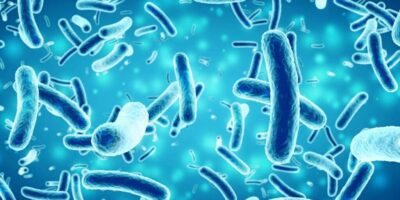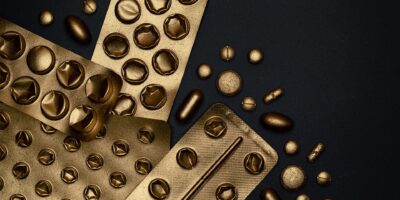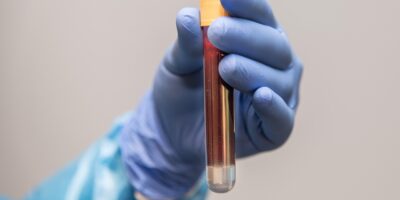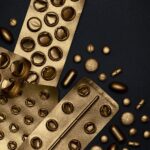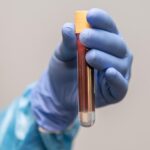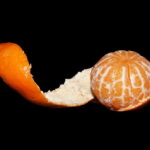Cooking oil waste is an issue that plagues the daily household all over the world. Countries such as Malaysia can produce 2-5 kg of waste oil per household while China and America both produce 50,000 and 55,000 tonnes of oil waste respectively. Researchers believe that microbial treatment may be an environmentally friendly solution.
Waste oil entering the environment results in several unwanted occurrences including ecological imbalance, clogged sewer pipes, and poor water quality. Furthermore, the treatment of waste oil usually results in incineration or being left in a landfill with other kitchen waste; this consequently results in the mass emission of greenhouse gases.
Microorganisms capable of producing the enzyme lipase may hold the key to effectively treating oil waste in a manner that does not harm the environment. Lipase can be used in several industries as a biocatalyst, accelerating the breakdown of triglycerides into glycerol and fatty acids.
The researchers in this study observed that the decomposition process of pig carcasses tends to produce many lipase-producing microorganisms, making it the perfect sample to isolate these microorganisms from. Furthermore, the temperature change of the composting process encompasses a period in which the procedure can reach temperatures above 55°C. This implies that the strains isolated during this period of decomposition will retain heat resistance qualities. It was further noted that until this study, no lipase-producing strains had been previously isolated from pig compost. The process that the researchers employed can be broken down into several steps involving the identification of the bacterium, optimizing lipase activity, and finally analysis of the treatment of different fats and oils.
The initial step in the process involves the identification of the lipase-producing bacteria. The samples were collected during the high-temperature period in the composting process. The isolated strains were inoculated in a glycerol tributyrate medium. While 4 strains were initially found, researchers selected the strain with the largest ratio of the diameter of the hydrolyzed circle to the diameter of the strain as the best lipase-producing strain. The units U/ml (U/mg) were used to measure lipase activity throughout the whole of this study. 1 U/ml is defined as 1 micromole of fatty acid being produced in 1 minute of hydrolysis; hydrolysis is the process of breaking down triglycerides into fatty acids and glycerol. The best strain was dubbed as strain ZF2 and was used for all subsequent experiments. PCR was then used to amplify the 16sRNA gene so that the results of the sequencing could be compared with other 16sRNA sequences on the NCBI (National Centre for Biotechnology Information) database by BLAST, a program for comparing biological sequence information. The 16sRNA gene was specifically used for this comparison because the sequence is highly conserved among species of microorganisms. The strain ZF2 was found to have a 98% sequence similarity with Bacillus velezensis. Subsequently, ZF2 was known as Bacillus sp..
Proceeding the identification of the lipase-producing bacterium, the scientists explored how to optimize the production of lipase within these bacteria. A variety of factors were adjusted in the medium composition such as the optimal carbon source, optimal nitrogen source, and the metal ions. Once the optimized components were found, a variety of concentrations of each were tested to determine the best final composition for the culture medium. It was found that as a carbon source, sucrose resulted in the greatest promotion of lipase production while the addition of (NH4)2SO4 as a nitrogen source increased upon that maximum. Moreover, the results showed that only Mn2+ increased lipase production as a metal ion while all the others resulted in an overall decrease. The respective concentrations of sucrose, (NH4)2SO4, and Mn2+ that resulted in the most lipase production were 3 g/L, 7 g/L, and 1.0 mmol/L. Any more than these concentrations and it was noted that lipase production decreased.
Furthermore, culture conditions were also adjusted to ensure in the greatest amount of lipase production. These factors included changes in pH, number of bacteria inoculated, incubation temperatures, and incubation times. It was found that an inoculum volume of 5% achieved the greatest amount of lipase production; this amount only increased when the pH was optimized at 6. The ideal temperature was found to be 25°C and an incubation time of 48 hours was determined to be the best. Values above and below for any of these conjoined factors were not capable of producing as much lipase. The combination of optimized culture conditions and an optimized medium composition resulted in a maximum enzyme activity of 32.46 U/ml.
In addition to the optimized conditions, the purification of the produced lipase enzyme played a significant role in achieving the most lipase activity. It was noted that “[a]fter two steps of purification, the specific activity of the lipase reached 317.59 U/mg, a 9.78-fold elevation” p12. The lipase was purified through ammonium sulfate-graded precipitation; an additional step of gel exclusion chromatography was used to further purify the lipase.
Following purification, while the researchers were able to determine the optimal conditions for lipase production, experiments still needed to be conducted in order to determine the effect of different factors on lipase enzymatic activity. These factors included heat stability, the presence of different metal ions, organic solvents as well as different surfactants. These factors were tested to ensure lipase activity would not cease in industrial conditions. While the enzyme is stable between 30 – 50°C, it was found that 50°C was the ideal temperature for lipase activity. Temperatures greater than 50°C only inhibited activity. The researchers noted that while previous studies suggested that Ca2+ increased lipase activity, this study showed that the concentrations of Ca2+ used resulted in an inhibitory effect. Rather, they found that 1 mM of Ag+ and Zn2+ promoted enzyme activity while several other metal ions demonstrated an inhibitory effect on the enzyme similar to Ca2+. They believe this may be due to the protein structure of lipase and the way that the metal ions might impact enzyme conformation. Furthermore, it was found that the organic solvents 5% n-hexane, 10% isopropanol, and n-hexane promoted the enzyme activity 167%, 133%, and 150% respectively. This bodes well for application prospects as the researchers mention that “the tolerance of lipases to organic solvents is crucial in industrial applications” p11. Finally, the researchers investigated the effect of surfactants on lipase activity. Only 10% Tween 20 and Triton-x-100 resulted in the inhibition of lipase activity while all other surfactants had no effect. This implied that lipase is able to maintain activity under a variety of conditions; lipase activity being unaffected by the harsh conditions it might experience in an industrial setting enhances the potential of lipase as a way to treat waste oils.
The final experiment conducted was to study the effect of lipase on different substrates to see what it works best on. A variety of animal and vegetable fats were tested; among animal fats, it was found that degrading chicken oil proved to be the hardest with a relative enzyme activity of 8.33%. Meanwhile, the enzyme worked the best on lard with 158.2%. It was suggested that this may be due to the source of the ZF2 lipase being a pig carcass. Within vegetable fats, the highest enzymatic activity was found when the substrate was soybean oil with 222.223% relative activity. Moreover, the lowest activity was found when degrading soybean oil with a relative activity of 64.3%.
The study overall concludes that the lipase produced from the bacterium dubbed Bacillus sp. strain ZF2 shows high enzymatic activity in degrading different plant and animal fats. While the study acknowledges that further research must be done into the produced lipase’s ability to degrade more complex kitchen oils, the enzyme still has immense potential to effectively treat waste oils in a safe and environmentally friendly way.
Future research will be focused on investigating the use of lipase with alternative preparations to the ones made in this study as well as the immobilization of lipase. The study concludes with the hope that additional research will allow for lipase to be used as a valid method of treating waste oils in the food and waste treatment industries.
